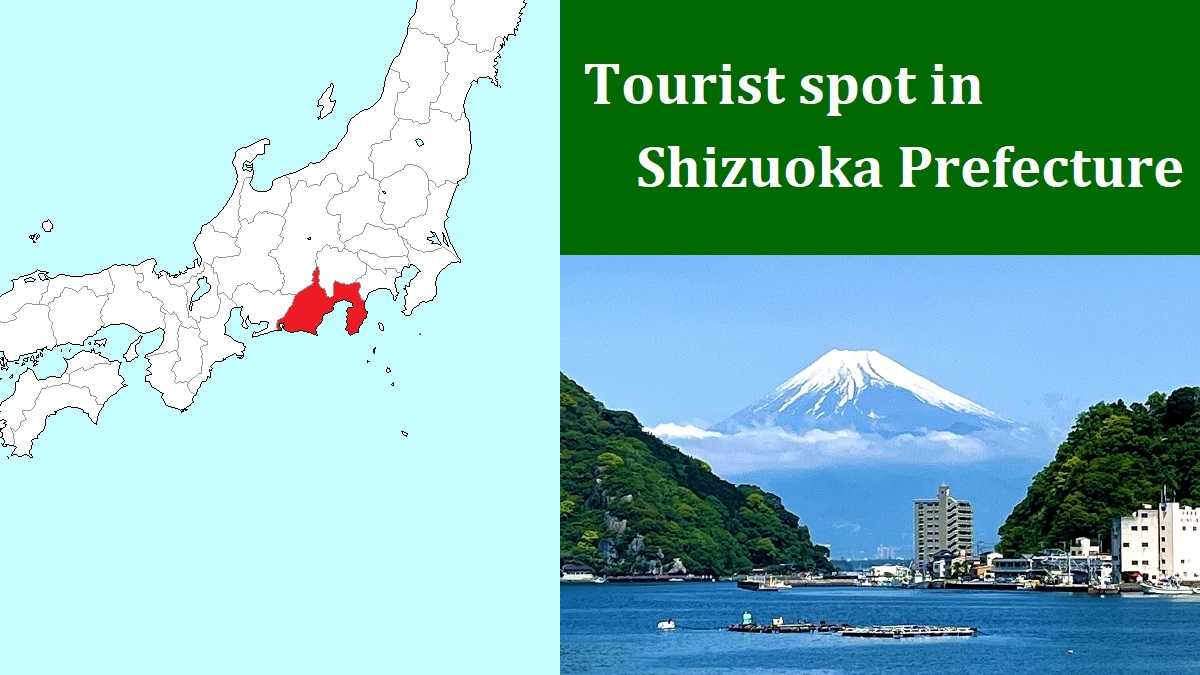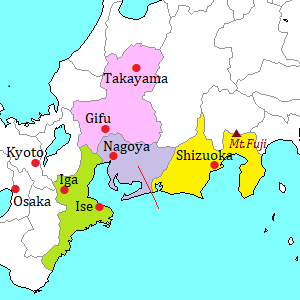Shimoda city [下田]
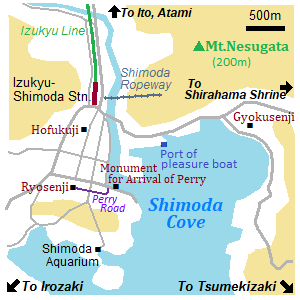
Shimoda is a city located near the southern edge of Izu Peninsula.
It is located about 50 km south of Atami.
Inouzawa River flows to the south and into a small cove, and the central area of the city is around the mouth of the river and the cove.
Many steep mountains surround the city, and the coastline around the city is indented.
The climate is warm, and the rainfall is much.
Japan had closed the country since 1639 under Edo Government.
But in 1853, Commodore Matthew C. Perry (1794-1858) visited Japan with a squadron of four war vessels.
He presented the Shogun in Edo (current Tokyo) with a letter from U.S. President Millard Fillmore.
(The people in Shimoda called the ships Kurofune [Black Ships].)
In the following year, the United States and Japan concluded a treaty of amity, and Shimoda was opened as one of the new international trading ports.
And in the year, the treaty between Russia and Japan was signed in Shimoda.
From 1856 to 1859, the Japan's first U.S. Consulate General was set up in Shimoda, and Townsend Harris (1804-1878) was assigned as a consul.
On this occasion, advanced samurais overthrew the feudal government and modern government was established in 1868.
In Shimoda city, there are some spots related above history.
Izukyu Railway leads from Atami through Ito to Shimoda.
Most limited expresses are operated from Tokyo.
From Izukyu-Shimoda station, sightseeing buses with a few courses start every day.
Each course tours most of below spots and takes 2.5 to 3 hours.
And the pleasure boat touring around Shimoda Cove are operated frequently.
It takes about 20 minutes.
Hofukuji temple (宝福寺)
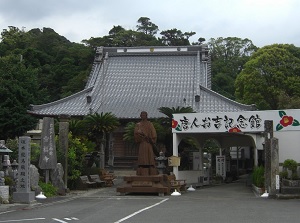
Hofukuji
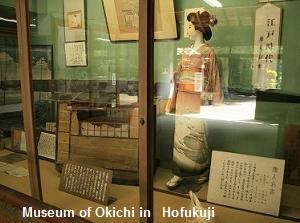
Hofukuji is a Buddhist temple located about 0.4 km south of Izukyu-Shimoda station.
"O" in the word is pronounced long, so it is read as "Hôfukuji".
It was founded in 1559.
In 1854, the main office of Japan government to negotiate with U.S. was set up in this temple.
This temple is known for the tomb of Tôjin-Okichi.
Okichi was a tragic Geisha and her real name was Saito Kichi (1841-1891).
When the counsil Townsend Harris had a disease in Shimoda, she was assigned as his nurse.
In Japan, the career as a nurse hadn't existed in that time, so the people in Shimoda thought that she was forced to become a concubine of a foreigner.
They felt pity for her, so they added the name "Tôjin" meaning forigner to "Okichi".
But, because she became rich, the people became jealous of her and despised her.
After three months, she disemployed.
She became lonely in people's icy stares.
She had drunk away her life, then at last, she killed herself.
Her family temple declined to give her burial.
So the priest of this temple entombed her with mercy.
This story became a novel in 1928.
But, in the story, the part after becoming nurse is exaggerated fiction.
In fact, because she had an illness, she disemployed three days later.
After that, it is said that she lived a poor life and died at the age of 48.
In this temple, there are her tomb and the memorial museum about her tragic life.
Ryosenji temple (了仙寺)
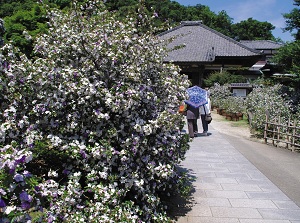
American jasmine by approach of Ryosenji
Photo by Shizuoka Prefectural Tourism
Association
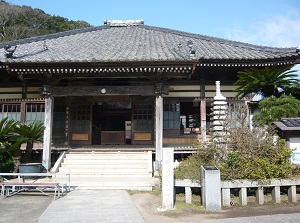
Main temple of Ryosenji
Photo by Shimoda Tourist Association
Ryosenji is a Buddhist temple located about 0.9 km south of Izukyu-Shimoda station.
"O" in the word is pronounced long, so it is read as "Ryôsenji".
It was founded in 1635.
In 1854, the Treaty of Shimoda between U.S. and Japan as an additional treaty of the Convention of Kanagawa in 1853 was concluded in this temple.
So there is a museum displaying many materials related to opening of the country, Perry, Harris, etc.
In addition, a lot of American jasmines are planted in this precincts.
So, this temple's nickname is Jasmine Temple.
(But American jasmine isn't the jasmine family as the classification of plants.)
Perry Road (ペリーロード)
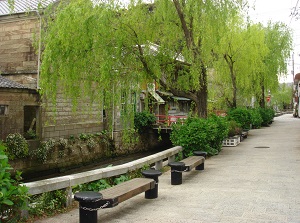
Perry Road
Photo by Shimoda Tourist Association
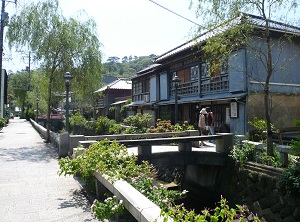
Perry Road
Photo by Shimoda Tourist Association
Perry Road is the approach to Ryosenji, and the length is about 600 meters.
Originally, here was a district of Geisha and courtesan.
After Commodore Perry landed at the port, he and his 300 subordinates marched on this street to Ryosenji.
But, it is the most attractive street now.
Old buildings are along this street.
Especially, some buidings of them are storehouses with Namako Wall.
It is the wall attached white tiles in lattice shape for reinforcement.
Now the buildings are the shops or cafes.
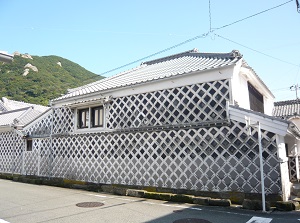
Old storehouse of Namako Wall
Photo by Shimoda Tourist Association
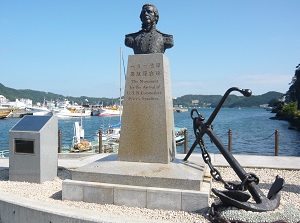
Monument for the Arrival of Perry
Photo by Shimoda Tourist Association
At the east end of the street by the cove, there is The Monument for the Arrival of U.S.N. Commodore Perry's Squadron (ペリー艦隊来航記念碑).
There are the bust of Commodore Perry and the anchor presented by U.S. Navy.
And there is also a monument of the message presented by from George Walker Bush, the 43rd president of U.S., in 2004.
Gyokusenji temple (玉泉寺)
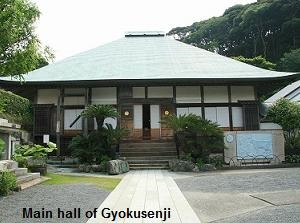
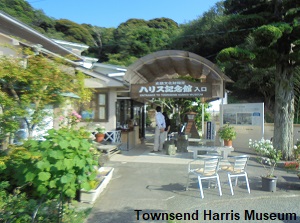
Gyokusenji is a Buddhist temple located about 1.8 km east of Izukyu-Shimoda station.
It is unknown when this temple was founded.
But there are written records that this temple was converted to Shingon to Soto Buddhism in the 1580s.
In 1856, Townsend Harris was opened the U.S. Consulate General here.
It is the Japan's first consulate general
And he employed Okichi as a nurse in 1857.
In addition, here was the Japan's first place that cow's milk was drunk and beef was produced.
In this site, there is Townsend Harris Museum.
And there are nine tombs of the foreign crews who visited this town.
In 1979, Jimmy Carter, the 39th president of U.S., and his family visited here.
Mount Nesugata (寝姿山)
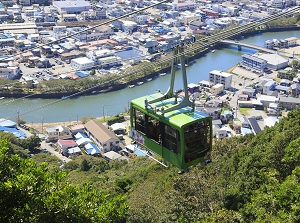
Ropeway to Mount Nesugata
Photo by Shimoda Tourist Association
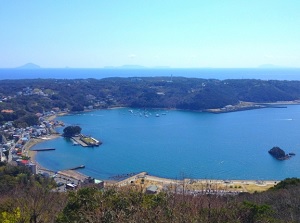
View from the observatory of Mount Nesugata
Mount Nesugata ("Nesugatayama" in Japanese) is a mountain located about 1 km east of Izukyu-Shimoda station.
On the mountainside, there is an observatory.
We can climb easily by the ropeway starting from the side of Izukyu-Shimoda station.
"Nesugata" means "sleeping form".
Certainly, it looks a big woman sleepling.
Tsumekizaki coast (爪木崎)
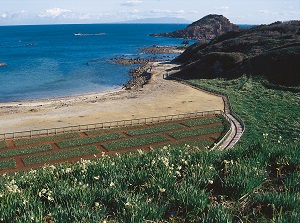
Tsumekizaki
Photo by Shizuoka Prefectural Tourism
Association
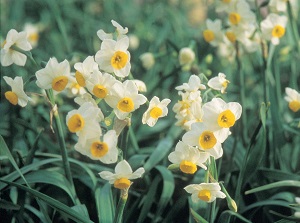
American jasmine by approach of Ryosenji
Photo by Shizuoka Prefectural Tourism
Association
Tsumekizaki is a coast located about 4 km east-southeast of central Shimoda city.
It is on the east coast of a small peninsula forming the cove of Shimoda.
The coast is rocky, and a flower garden is near the coast.
This coast is known for community of narcissus, and they are in full bloom from late December to January.
By route bus, it takes about 22 minutes from Izukyu-Shimoda station.
Shirahama Shrine (白浜神社)
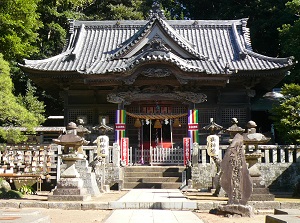
Shirahama Shrine
Photo by Shimoda Tourist Association
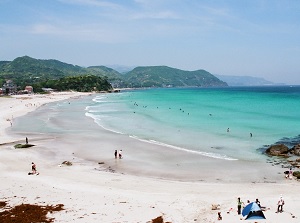
Shirahama beach
Shirahama Shrine is a Shinto shrine located about 5 km northeast of the center of Shimoda city.
It is unknown when this shrine was founded, but it is recorded in the documents in the 9th century.
Near the shrine, there is a beautiful beach of white sand.
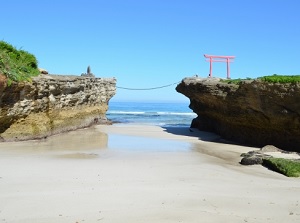
Torii gate of Shirahama Shrine
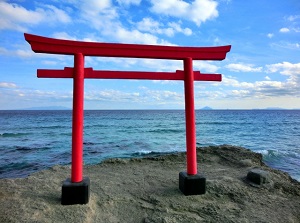
Torii gate of Shirahama Shrine
On a rock by the beach, there is a red Torii gate of the shrine, and the scenery is also good.
By route bus, it takes about 11 minutes from Izukyu-Shimoda station.
How to get here
To Izukyu-Shimoda terminal station, by limited express, about 1 hour 20 to 25 minutes from Atami, about 2 hour and 40 to 45 minutes from Tokyo, Shinjuku.
By local train, about 1 hour and 30 to 40 minutes from Atami.

